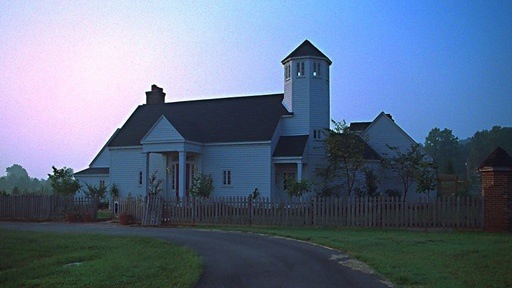
Many forget that the current environmental reawakening doesn’t mark the first time that this has happened. Others are simply too young to remember. I am not. At 48, I was a teen through most of the 1970s, and clearly recall the heady days typified by the first Earth Day at which point we thought we might actually change the world. I entered college in 1978, believing that my chosen major of architecture allowed as much opportunity as any to help build a better place.

From the beginning, I was looking to environmental issues to help form the architecture in a polemical way. The model in this image was from the first project of my second year. The site was a cliff at the edge of the English Channel. I did my homework and found that the wind speeds there were consistently high enough to generate electricity. So I designed the building as a massive half-funnel, scooping air in at the left of the image, then narrowing down to where the turbines were, just off the image to the right. So the building wasn’t just designed to generate electricity from the wind, but to also look like it was using the wind.
I continued this sort of experimentation through school. Later influences were the discovery of Christopher Alexander and Pattern Language over Christmas break in 1980 and the discovery of DPZ and the Seaside design shortly thereafter. My more technical explorations focused on passive techniques such as earth-sheltering... most of my third-year designs burrowed into the earth.
I recall an article in Mother Earth News near the beginning of fourth year entitled “Taking a Solid Stand on Solar Battlements,” or something of the sort, in which the author described building his own house. He spent an additional $500,000, if memory serves correctly, to do all of the green things he did. In the early 1980s, that was an immense sum of money. The article was a huge jolt to me, because it was clear that most people could not spend that kind of money even if they wanted to. I spent the evening skewering all of his active solar equipment in my mind, only to realize that the single biggest ticket item was the additional structure required to support my beloved earth-sheltering.
It wasn’t long until I was asking myself “why can’t we get the advantage of the mass of the earth without actually spending the money to bury the building?” This train of thought led to something I called “cool tubes” which would bring air into the building pre-conditioned by the mass of the earth.
I graduated in 1983, full of hope. Wanda and I debated for the rest of the year where we should live. We ended up choosing to build in the country so that we could create a self-sufficient homestead. Current wisdom had it that a family of four could feed themselves year-round in a temperate climate on one acre, so we bought a one-acre lot in February 1984 and began building the house in the photo at the top of this post. Working primarily at night and on weekends, it took a year to design and two years to build.
The house was super-insulated, and had every passive system I could think of, including the Cool Tubes that I had postulated in college. For the first two years after we moved in on April 22, 1987, it had no active heating or cooling system at all except for the two massive Russian fireplaces. A bitter freeze, by North Alabama standards, finally convinced us that we needed a mechanical conditioning system. So I retrofitted the cool tubes (which never worked properly because I under-sized them) to be a ground water loop, and built my own geothermal heating and cooling system. I bought the actual heat pumps, of course, but built the rest from scratch.
Conditions at work were changing, too. At first, clients would merely look askew at me for talking about sustainable design. Increasingly, however, I wasn't just getting a deaf ear, but outright hostility. Things like "Oh, you're for solar power? I ripped the solar panels off my roof last year because they were so hideous. I don't want any tree-hugger designing my buildings!" And so I eventually gave up, because it was obviously counter-productive to me keeping my job, or getting another one anywhere in town. For most of the next two decades, I did "normal" architecture because nothing sustainable would be tolerated.
What caused this state of affairs? Some say “that can’t possibly happen today; too many people believe that going green is the right thing to do.” But that’s precisely what people believed in the 1970s, too, and look what happened. It could happen again. Do we have another generation to waste before we begin building in a truly sustainable fashion? If not, then we clearly must build in a way that is lovable. If it can’t be loved, it won’t last.
~ Steve Mouzon
+263+


